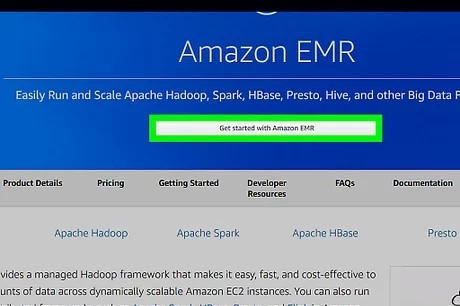How to Practice Hadoop Online: 11 Steps

Introduction:
Hadoop, an open-source software framework, has become increasingly popular for storing and processing big data. With its renowned ability to handle enormous amounts of data, Hadoop is used by numerous organizations across various industries. For those interested in refining their skills, there are convenient ways to practice Hadoop online. This article provides a step-by-step guide for practicing Hadoop online.
Step 1: Understand the basics
Before diving into hands-on practice, familiarize yourself with basic Hadoop concepts such as MapReduce, HDFS, Hive, Pig, and YARN. Learning these foundations will make your online practicing experience smoother.
Step 2: Choose a virtual environment
Select an appropriate online platform or virtual environment that allows you to practice Hadoop. Some popular options include Cloudera Quickstart VM, Hortonworks Sandbox VM, and MapR Sandbox VM.
Step 3: Setup your virtual environment
Download and install one of the above-mentioned platforms on your computer. Follow instructions provided by the chosen platform to correctly set up the virtual environment.
Step 4: Access Hadoop web user interfaces
Once your virtual environment is up and running, access the web user interfaces (UIs) provided by the Hadoop components installed within the environment to interact with the system comfortably.
Step 5: Utilize online tutorials and resources
There are numerous free online resources available that provide valuable information about various Hadoop components. Use these materials to complement your practice sessions and gain insights into best practices.
Step 6: Implement small-scale projects
Start practicing by working on small-scale projects related to data ingestion, storage, processing, and analysis using Hadoop components like Sqoop, Flume, Hive or Pig scripts.
Step 7: Work on real-world case studies
Select case studies concerning real-world business problems in domains of your interest. Implement solutions using Hadoop’s capabilities and share your findings on professional platforms to gain feedback from peers.
Step 8: Join online communities
Participate in online forums or discussion groups related to Hadoop. Engage with experienced professionals to seek advice, discuss issues you encounter during practice, and learn from others’ experiences.
Step 9: Attend webinars and workshops
Keep an eye out for webinars and workshops organized by Hadoop experts and companies. Attending such events will help solidify your understanding, clarify doubts, and discover advanced usage techniques.
Step 10: Complete certification courses
To further enhance your skills and strengthen your profile, consider pursuing Hadoop certification courses from recognized institutions. Many universities and institutes offer online certifications with hands-on practice sessions included.
Step 11: Practice consistently
Consistent practice is the key to mastering Hadoop. Dedicate time regularly to exploring various aspects of the framework, experimenting with different components, and solving complex problems.
Conclusion:
By following these 11 steps, you can effectively practice Hadoop online and enhance your skillset. Continual learning and consistent practice are crucial to becoming proficient in Hadoop. Good luck on your journey toward becoming a skilled Hadoop professional!






